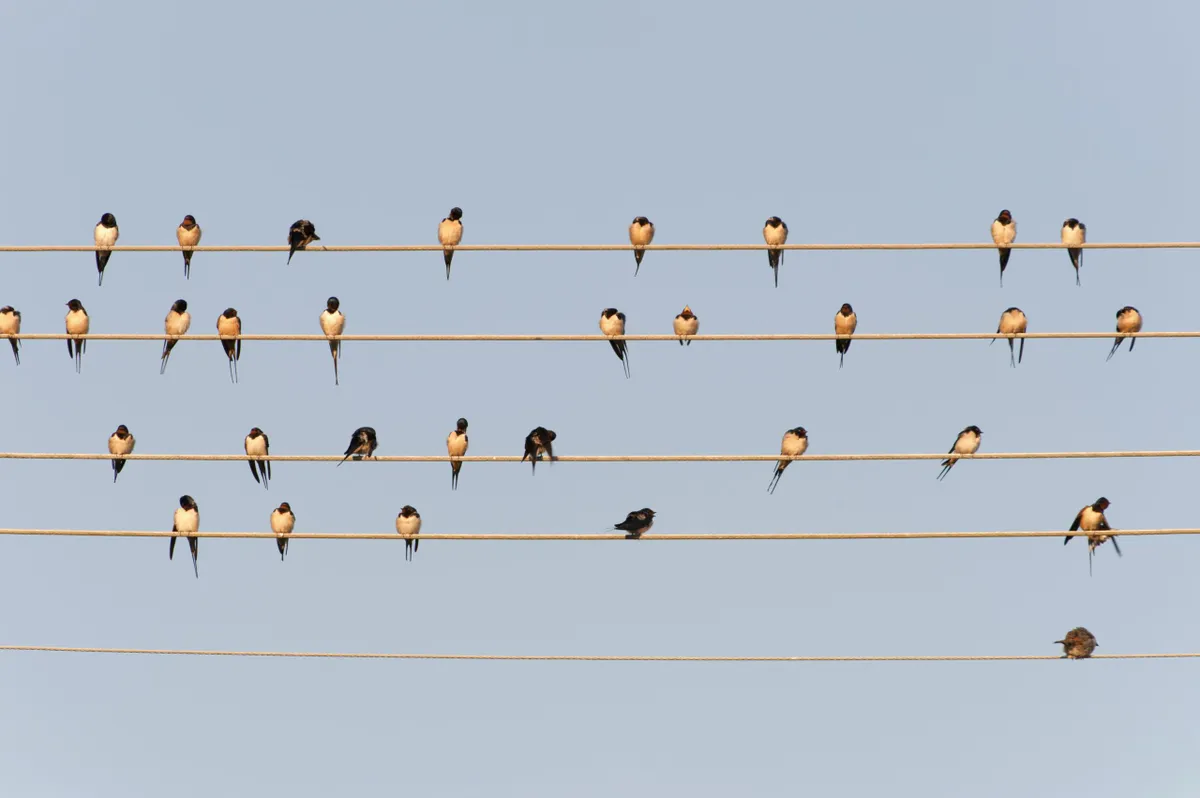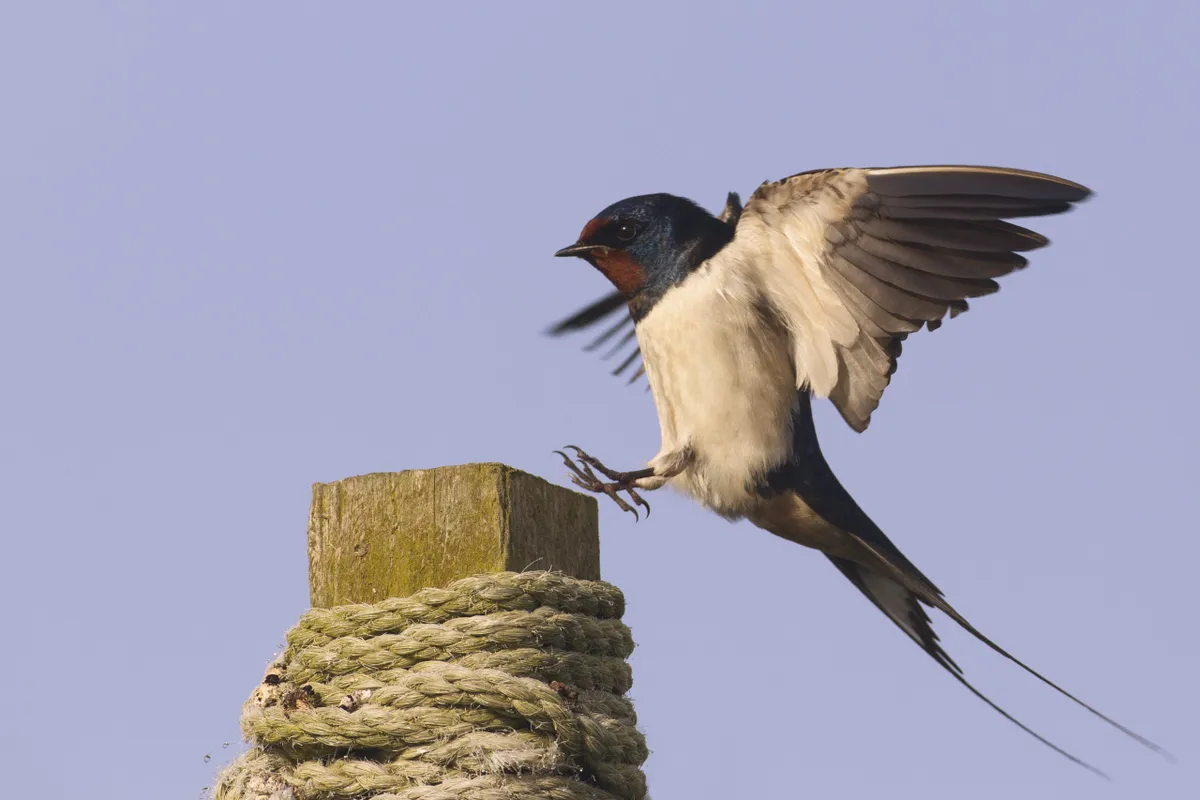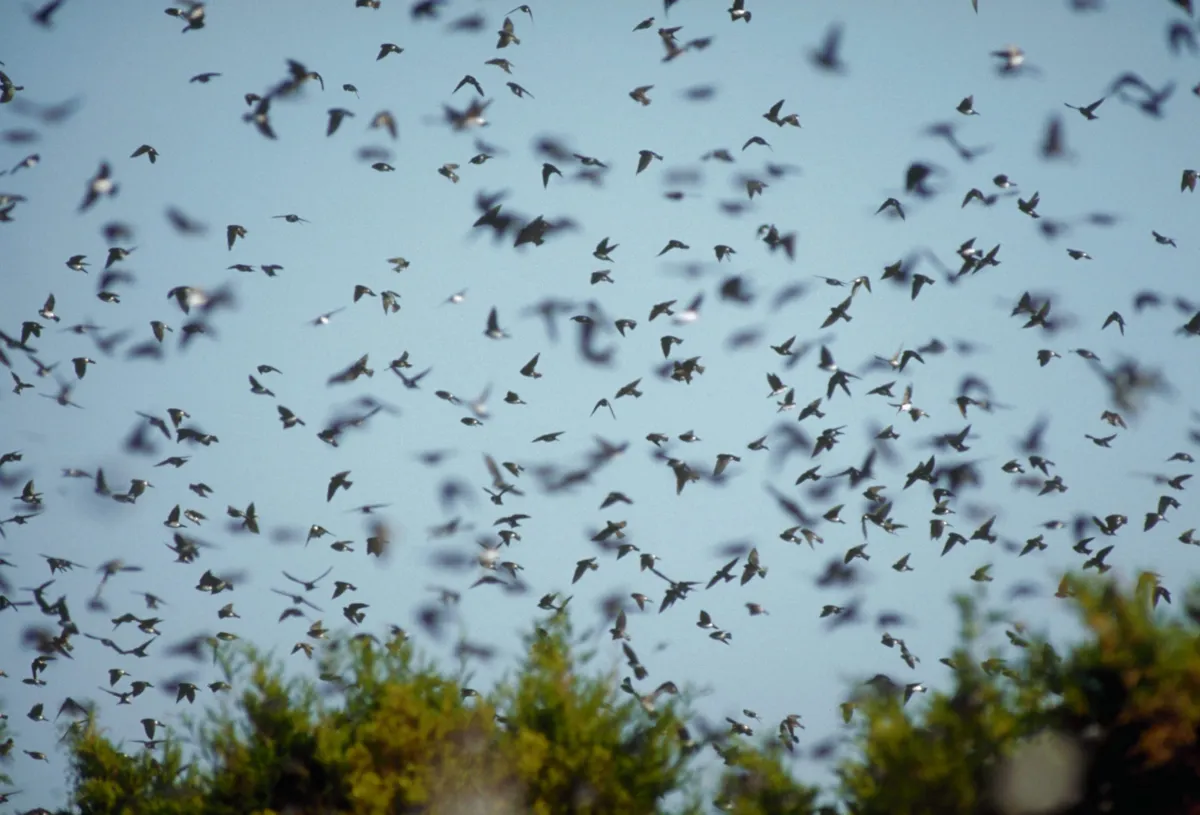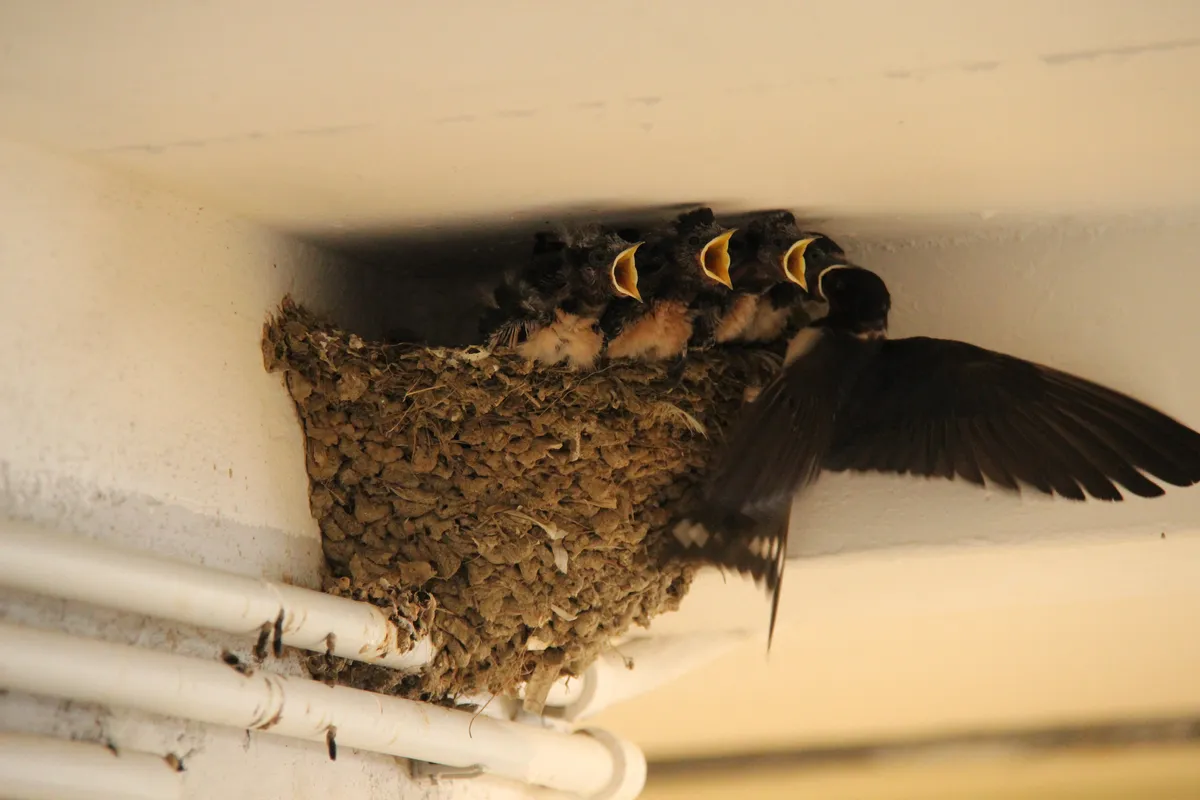The swallow is an iconic bird in the UK and for many, the herald of spring. With its soothing, twittering song and its loop-the-loop flight, it is a welcome sight in our skies.
Learn more about British swallows, including swallows migration routes where they go in winter, nesting habits and best places to see in the UK.
It has inspired us throughout history, with its common name changing to reflect our changing rural architecture – house swallow, chimney swallow and now barn swallow. It has even been believed that harming swallows would bring bad luck.

In the north of England, up until the 1960s, they believed that killing a swallow would lead to cows producing bloody milk or no milk at all. And all of this down to a small bird that is not much bigger than a matchbox.
How to swallows find a mate?
They may not cause bloody milk, but male swallows do have a darker side. Male swallows go to extreme efforts to ensure that their genes are passed on to the next generation.

Males without a mate will often visit the nests of other swallows to associate themselves with females that are already paired.
However, the majority of the time, the only way a female will accept a new male is if their current mate dies or if the nest fails, thereby ‘divorcing’ the established pair.
Rogue males sometimes take things into their own ‘wings.’ For example, if there is an unattended nest with young chicks in it, it has been known for a male to kill the entire brood, ensuring the nest fails and making it more likely that the female will look for another male elsewhere.
Why and when do swallows migrate?
The old proverb, ‘One Swallow makes not a spring,' doesn’t stop us looking forward to seeing our first swallow. Unfortunately, swallows also indicate the end of the summer when they depart for warmer climes and that is where our swallows are currently headed.

Where do swallows migrate to?
Swallows undertake an impressive 6000 mile migration between the UK and South Africa twice a year in search of food.
They nest in the UK in the summer, but as they only feed on aerial insects (the majority of which are large flies, such as horseflies and bluebottles), their food source starts to run out in the autumn.
Faced with the prospect of little or no food, they start to head south during September and October.

It’s no walk in the park for our departing swallows as their extreme migration takes them south through Europe and across the Sahara desert.
They cover approximately 200 miles a day, generally at about 20mph – the maximum flight speed recorded was a whopping 35mph.
In addition to their epic journey, swallows also run the risk of starvation, exhaustion and must cope with extreme weather.
Although they fatten up before they leave it is difficult for them to avoid the hazards they will encounter on route. Therefore, swallow populations do fluctuate year on year.

Do swallows return to the same nest?
Most songbirds use a nest for just a single clutch or season, then build a new one – if they survive to breed again. But one study showed that most swallows returned to the same colony, with 44 per cent of pairs reoccupying the same nest. “This is remarkable given the length of a swallow’s return migration from its wintering grounds in South Africa,” says Rob Robinson, associate director of research at the BTO. Robinson has studied this iconic species’ unusually strong nest-faithfulness, a phenomenon called philopatry.

Find out more about swallows nesting habits
How to spot a swallow
With swifts, house martins and swallows all swooping around our skies, how do you spot a swallow?
If you’re lucky enough to see them up close then swallows are easily identified from their dark metallic blue plumage, and chestnut forehead and chin.
Do not despair if they’re just a silhouette in the sky. Swallows have a noticeably longer forked tail than swifts and house martins and feed a lot closer to the ground.

The British Trust of Ornithology (BTO) works in partnership with over 40,000 volunteer birdwatchers to chart the fortunes of UK birds.
Among the surveys that we coordinate is our popular Garden BirdWatch, the largest year-round survey of garden birds in the world. For more information about Garden BirdWatch or to speak to the Garden Ecology Team please email gbw@bto.org
Find out when swallows are leaving the UK this year by following the live Birdtrack graphs on the BTO’s website. These chart migration movements and distributions of birds throughout Britain and Ireland.
